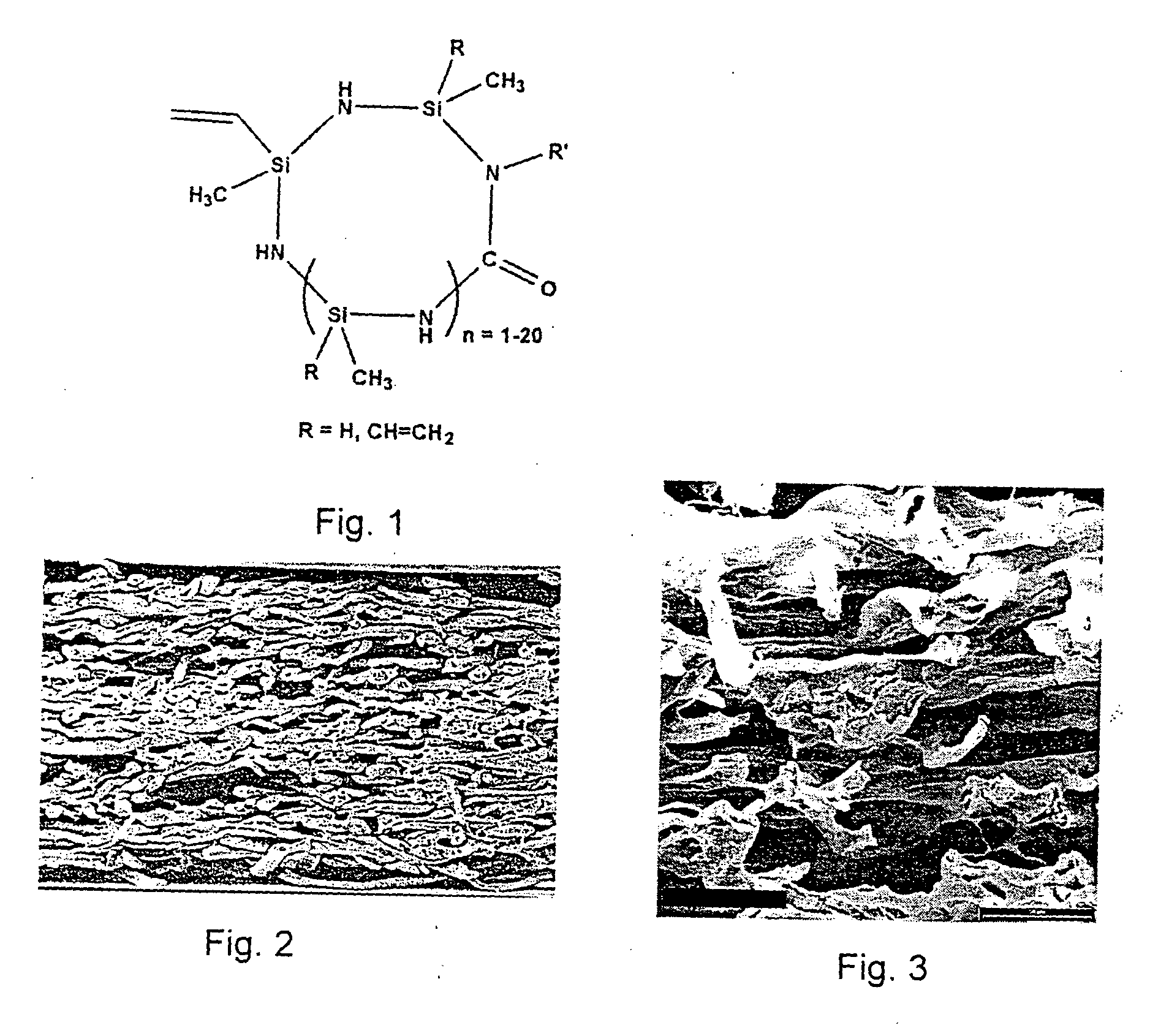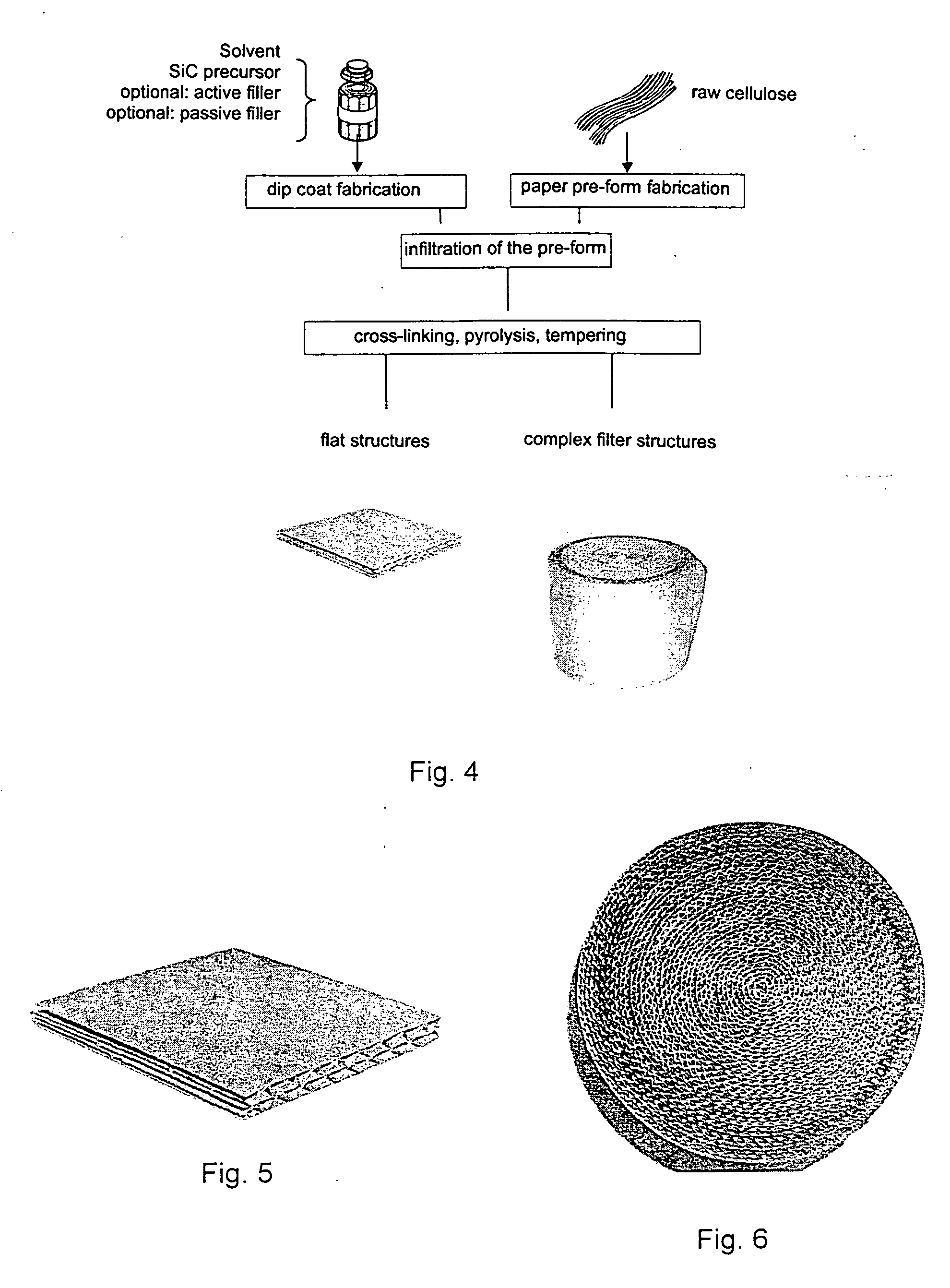Porous SiC-bodies with micro-channels and process for their fabrication
a technology of porous ceramics and microchannels, applied in the direction of catalyst activation/preparation, metal/metal-oxide/metal-hydroxide catalysts, machines/engines, etc., can solve the problems of inability to further improve the extrusion process, the extrusion process is inconvenient to operate, etc., to achieve good filtering performance, cost-effective, and large effective internal surface area
- Summary
- Abstract
- Description
- Claims
- Application Information
AI Technical Summary
Benefits of technology
Problems solved by technology
Method used
Image
Examples
Embodiment Construction
[0030] In a first step the process according to the invention consists of (a) the provision of a pre-body made from cellulose or pulp. The choice of the cellulose or pulp material depends in particular on fiber architecture, carbon rate of yield, low annealing or ash residues, low alkali- / earth-alkali metal content as well as decomposition and shrinkage behavior.
[0031] Typically the pre-body is made from paper or cardboard with high pulp content. It is essential for the body, that it has a high content of fibrous pulp or cellulose. A high content of relatively long pulp fibers is advantageous.
[0032] In principle various known forming methods for paper may be utilized for the fabrication of the pre-body. For instance, a cylindrical body is easily fabricated by multiple turn coiling. Here flat and corrugated layers can alternate. The body from cellulose or pulp usually contains additional additives which predominantly serve the mechanical stabilization of the body such as, for insta...
PUM
| Property | Measurement | Unit |
|---|---|---|
| Length | aaaaa | aaaaa |
| Length | aaaaa | aaaaa |
| Fraction | aaaaa | aaaaa |
Abstract
Description
Claims
Application Information
 Login to View More
Login to View More - R&D
- Intellectual Property
- Life Sciences
- Materials
- Tech Scout
- Unparalleled Data Quality
- Higher Quality Content
- 60% Fewer Hallucinations
Browse by: Latest US Patents, China's latest patents, Technical Efficacy Thesaurus, Application Domain, Technology Topic, Popular Technical Reports.
© 2025 PatSnap. All rights reserved.Legal|Privacy policy|Modern Slavery Act Transparency Statement|Sitemap|About US| Contact US: help@patsnap.com



